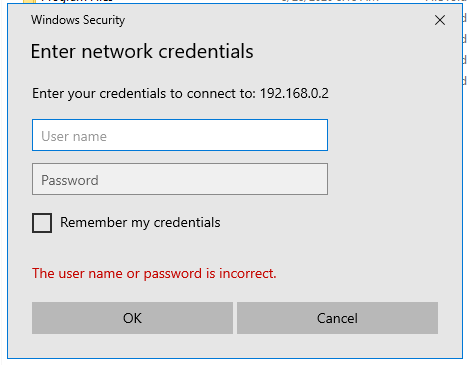It can be hard to get reliable information about the plethora of options you can choose when ordering a Steelcase chair. Therefore, I’ve decided to share what I’ve found out about the pros and cons of each option. Please note that the last time I researched this was in 2018 and that something might have changed since then.
Headrests
For the Leap, I recommend no headrest, because the Leap’s headrest is a poorly designed afterthought. The main shortcoming is that there is no depth adjustment, which means that you cannot move it out of the way when you’re sitting upright. This is a problem, because the headrest not only doesn’t serve any useful need in the upright position, but also restricts the movement of your head. In my case at least, it always led to pains in my neck muscles. On the other hand, in the reclined position, you need the headrest to come forward to support your neck as you fix your gaze on the computer screen. But the Leap’s headrest doesn’t, so you end up looking for a pillow of just the right thickness, which can be quite a challenge. The bottom line is, if you will be spending a lot of time watching movies in the reclined position, you should probably get a different chair. Also, if you’re from America and were planning to get the Platinum frame, the headrest only comes in black, so it won’t match that very well.
On the Please, the headrest is mediocre, but more tolerable than on the Leap. It has no depth adjustability, but is positioned very far back, so at least it doesn’t restrict your head movement in the upright position. In the reclined position, you will still need a pillow. Oh, and the Please’s headrest only comes in black, which would make it esthetically incompatible with the white version of the Please.
The Gesture can be ordered with a more advanced headrest that has depth adjustability. It looks promising, but I don’t have first-hand experience with it – the demo unit I was given did not have the headrest.
Frame
Various models have different frame color options, which you can probably locate just fine in the Steelcase official store, or in the PDF brochures on the Steelcase website. The important thing to remember is that not all frame colors that you see online are available in all regions. For example, the Platinum (light grey plastic) Leap frame, which is shown everywhere in Steelcase’s marketing photos, is not available in Europe. (Imagine my disappointment when I learned this.)
If you’re getting the headrest, make sure that the headrest will match the frame color you’ve chosen. On some chair models, the headrest is only available in black (see above).
Base
The cheapest base (only available in Europe, I think) is black and made of plastic. I have no experience with it, but it may not be a bad choice, because it should hide scratches pretty well. According to one Steelcase salesperson I talked to, their durability is about the same as the more expensive versions (i.e. they won’t break).
Then there are powder-coated aluminum bases. The problem with those is that if the paint chips off (and it probably will sooner or later), they can look unsightly.
The most expensive option is polished aluminum. The extra cost over the cheapest base is between €40 and €100 ex VAT (depending on the chair model). It’s what you would expect polished aluminum to be – looks nice, but you can basically scratch it just by looking at it. If you’re in the habit of resting your feet on the base, you will definitely scratch it – even if you’re just wearing socks. I’ve heard it’s possible to polish it with the sort of tools an auto body shop would use, and then it looks like new again. For me, the biggest advantage of polished aluminum is that you can see it better in the dark. I really don’t like to stub my toe while walking by my chair at night.
Casters (wheels)
If your chair will be used on a carpet, choose the standard hard casters; if it will be used on a bare floor, choose the soft rubbery ones. If you plan on using the chair on different surfaces, note that the hard casters still work on hard floors, they’re just a bit more prone to skidding when you move around.
Make sure the correct casters are entered on your order form. It’s very easy for you or the salesperson to pick the wrong option, because the hard casters are suited for soft surfaces and the soft casters are for hard surfaces.
Fabric
Steelcase uses different fabric suppliers in different regions. There is only a little overlap between the European and the American fabric catalog.
In the Americas, the most popular choice is probably “Cogent: Connect” (polyester), and other than that, I don’t have a lot of information to share.
In Europe, most people seem to go for “Atlantic” (polyester), which is very similar to “Cogent: Connect” – however do note that the color palette is different. Other popular choices are Fame and Steelcut Trio. Fame (New Zealand wool) costs about €30 extra. At ~€80 extra, Steelcut Trio (thick wool) is a more premium choice and has very nice texture patterns, but feels rough to the touch. Generally, wool fabrics have more friction, so if you have any reason to suspect that you are prone to slipping forward in your chair (personally, I’ve never experienced it), they may be a better choice.
I should emphasize that all Steelcase fabrics are of very high quality and even the cheapest ones (Buzz, Atlantic) work fine and are durable – by that I mean “will easily last several years of heavy use”. Personally, I picked Fame because it was the only fabric that came in the light grey color I wanted.
There’s no need to worry about how “cool” the various woven fabrics feel. Some people (including some Steelcase reps) will claim that thin fabrics offer better cooling, but in my testing, I haven’t found that to be the case. Even putting extra layers of fabric on the chair has no meaningful effect on how warm the seat feels after 15 minutes of sitting. The reason is that you are sitting on several inches of foam – an excellent thermal insulator. Whether you add 1 milimeter or 2 milimeters of fabric on top of it makes no difference. This rule may not apply to less breathable materials like leather.
In case you’re curious about the Steelcase chairs pictured in my reviews, the Amia uses Buzz (polyester). The Leap uses Fame (the greenish demo unit is “absinthe” and my own unit is “grey”). The Please uses Fame (a daring combination of “grey” and “scarlet”). The Think uses Steelcut Trio (“orange”).
Here’s a European Steelcase fabric sampler that I found useful.



